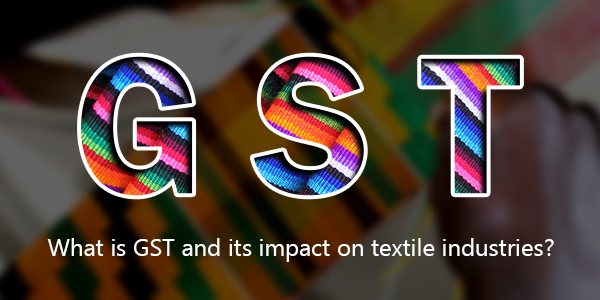Textile industry is one of the biggest industry in India and it provides employment as well as supports export of India.
With GST, textile industry has been facing issues since beginning and it’s charm is diminishing:
When GST was introduced people hoped that this will give boost to the industry and cost of products would reduce as people will now get credit of machinery and services also which was not available in Pre-GST regime.
With introduction of GST people in Textile industry were facing difficulty in GST because of inverted duty structure because GST rate on yarn was 12% and the finished garment was taxed at 5%. Also the machinery used in such industry was taxed at 18% or 28% and therefore too much money on textile industry owners was blocked in credit and hence this was increasing their cost and defeating the core of GST to make a free flow of credit.
However a relief came when government announced refund of such blocked credit to the textile industry. But, same came with a twist wherein vide Notification No. 20/2018-Central Tax (Rate) dated 26.07.2018 it was announced that refund of Input Tax Credit would be available for supplies received on or after 1st Aug 2018.
Net Accumulated Input Tax Credit after adjusting towards July month Tax liability and lying un-utilised in balance upto 31st July, shall Lapse.
Industry opposed the above notification, however no step was taken against it by government. Also no refund was provided for credit available against capital goods and services. Even after so many issues people were still having some relief as they were receiving the refund of atleast the block credit and it was helping them in maintaining their liquidity.
However such a thing/ mechanism is completely defeating the purpose of GST, wherein GST was introduced to remove cascading effect of tax but now as refund is not available for services and capital goods, people who are into online selling of goods and purchasing goods in the same rate their cost is going to increase as they wont be able to fully utilise the credit available.
For Eg: A person purchase goods of Rs. 1000 on which GST is 5% and sells it for 2000 on which GST is 5% and commission of online selling platform is 30% and GST on same is 18%. Therefore ITC available with vendor is Rs. 50, ITC on service is Rs. 108 and output tax liability is Rs. 100. Now after settling the above transaction assessee still has a credit of Rs. 58 which is in his credit ledger but he won’t be able to take credit of same and it will ultimately become cost for the assessee and block his liquidity.
This is a very small example if we convert this into crores the amount would be huge and hence we can see the failure of GST and we must oppose this and request the government to provide relief from such block credit.
Later, when people started settling with the refund and ITC rules, CBIC changed the rules for ITC because of which only 20% credit could be claimed for bills which were not available in GSTR 2A which was later on reduced to 10%.
Thus the above things are adding to the difficulty of textile industry owner’s liquidity and in addition to above it has been proposed in 39th GST council meeting that the inverted duty structure would be removed and there are strong rumors that the rate of textile garments would be increased to 12% from existing 5% which will again add to the cost of people, as people who were setting their cost by considering the refund of tax would no longer be able to claim such refund.
In a Press Release Dt. 18.07.2019, Ministry of Textiles made the following observation:
“Ministry of Textiles has not conducted a study on the impact of demonetization and GST on textile sector as no negative impact of demonetisation was observed by the Ministry during its implementation of schemes/field visits.
GST rates for garments and made up articles is 5% of sale value not exceeding Rs. 1000 per piece and 12% for articles of sale value exceeding Rs. 1000 per piece. The GST rates are lesser than the pre-GST incidence of taxes on these goods. To reduce the cost of garment industry, GST rate on manmade fibre yarns has been reduced from 18% to 12%. Further, the refund of accumulated input tax credit on fabrics has also been allowed to reduce cost of fabrics which is a major input for garments. Further, under the Interest Subvention Scheme, it was announced in the budget speech that ₹350 crore allocated for 2 per cent interest subvention for all GST-registered MSMEs on fresh or incremental loans.”
However, if we look at the series the things they are not going in the right direction, first inverted duty was introduced, second credit till july 2018 was blocked, third ITC rules were changed and made more unfavorable and fourth now GST rates is going to increase which will again add to the burden.
Already many of textile owners have shut their business because of liquidity crises and looking at current budget crises and liquidity issues of Government they would be reluctant in issuing more refund and increase the rate however it should be advised to government that if it wish to reduce refund and stop inverted duty structure it should reduce the rate of yarn rather than increasing rate of garment.
Thanks to CA Ravish Baweja and CA Tejas Shah from Surat, Gujarat to provide their practical inputs for this article and making it more close to reality rather than a theoretical post.
This article is just for information purpose it is always advisable to hire a professional for practical execution. If you need assistance you can ask a question to our expert and get the answer within an hour or post a comment about your views on the post and also subscribe to our newsletter for latest weekly updates.













